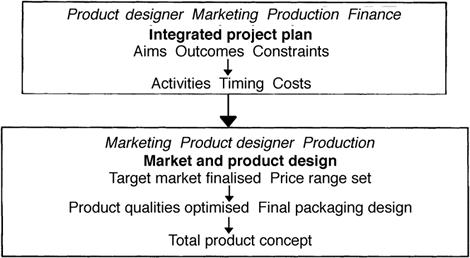FOOD
PRODUCT DEVELOPMENT
Mary Earle, Richard Earle and Allan Anderson |
| Loading
|
|
||||
|
|
Part
2, Chapter 3
The product development process 3.3.1 Setting up the commercialisation The first activities in the product commercialisation are to agree on the aim, the resources and the final definition of the product and consumer relationship by developing an integrated project plan, and finalising the market and the product as shown in Fig.
3.10.
 Fig. 3.10 Setting up product commercialisation. All the people who are to be involved in the commercialisation need to be in the discussion, together with the product designers, so that there is technology integration between the design and the commercialisation. The business strategy is revisited at this stage to ensure that the product is still in harmony with the business. The aims and outcomes are becoming more specific because of the increasing knowledge created in the product design. It is very important that the aims, constraints and outcomes for the product commercialisation are considered in a combined discussion so that the different groups are not going in diverse directions and working towards different outcomes. For a drastic example, marketing and production may be aiming for different sales volumes, or marketing may be working to a price outcome not related to production's cost outcome. From the joint agreement on aims and outcomes comes joint identification of the necessary activities and then integration of the activities in the project plan. New constraints may have appeared because of competitive actions or changes in raw material availability, or changes in the finance for capital investment and some of them may have become critical. It is important to revisit and re-identify the critical constraints. Finally the timing and the costs for the various activities are identified so that the combined plan for commercialisation can be as efficient and effective as possible. The other consideration in setting up the product commercialisation is to finalise the product and relate it to the target market. The total product concept needs to be built up from the market and product design (Earle and Earle, 2000), defining the core product, the total company product, the consumer's product concept and the society's product concept. There may be a need for some further product design to optimise the total product concept. |
|
 |